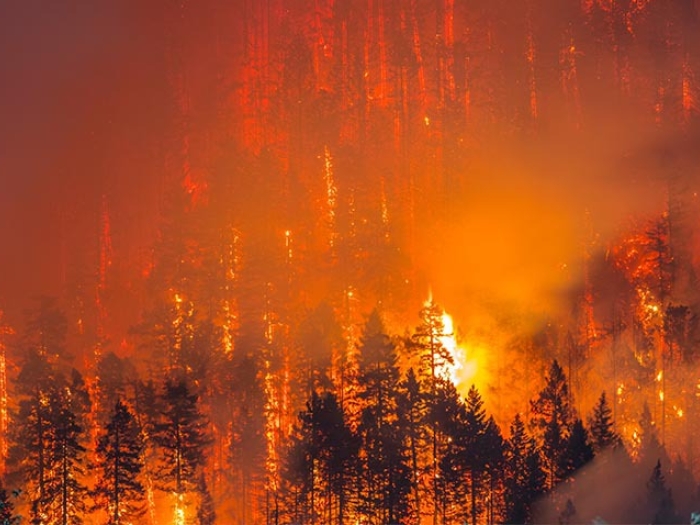About 20-40% of adults with symptoms of COPD – but not the disease itself – use these types of long-lasting inhalers.
5:00 AM

Researchers supported by the National Institutes of Health have found that dual bronchodilators – long-lasting inhalers that relax the airways and make it easier to breathe – do little to help people who do not have chronic obstructive pulmonary disease, but who do have respiratory symptoms and a history of smoking.
COPD, a lung disease that obstructs the airways and leads to coughing, wheezing, and shortness of breath, affects about 15 million Americans. However, millions of others who smoke or used to smoke and have some symptoms of COPD have also been prescribed bronchodilators.
"We've assumed these medications worked in patients who don't meet lung function criteria for COPD, but we never checked," said MeiLan K. Han, M.D., a principal investigator and first author of the study and Chief of Pulmonary and Critical Care Medicine at the University of Michigan Health. "We now know these existing medications don't work for these patients."
The findings of the study, which was funded by the National Heart, Lung, and Blood Institute, were published in the New England Journal of Medicine and simultaneously presented at the European Respiratory Society International Congress.
According to scientists, the implications are significant. First, they show the importance of diagnosing lung conditions through spirometry, a lung function test Han noted is underutilized in clinical practice. Second, they show the need for new, effective therapies for patients without COPD.
Inhalers have long been the primary go-to treatment for these patients, she explained, because doctors either assume a patient has COPD, or if they don't, that their smoking-related symptoms could be helped by the inhalers. But while tobacco smoking causes a large spectrum of lung damage, the study showed bronchodilator therapy only helps patients with enough lung damage that would result in abnormal spirometry readings.
In the 12-week, randomized, double-blinded study, which was part of the Redefining Therapy in Early COPD for the Pulmonary Trials Cooperative, researchers enrolled 535 adults with symptoms of COPD, ages 40-80, at one of 20 United States medical centers. Twice each day, study participants used an inhaler that contained either medication or a placebo.
Like Podcasts? Add the Michigan Medicine News Break on Spotify, Apple Podcasts or anywhere you listen to podcasts.
By the end of the trial, some adults in the medication (intervention) and placebo (control) groups saw slight respiratory improvements – this could mean they coughed less, produced less phlegm, or felt less winded – which was assessed through the St. George's Respiratory Questionnaire. However, the researchers found no significant differences between those receiving medication or placebo. They reported 56% (128 of 227) of participants who received the medication saw respiratory symptom improvements, compared to 59% (144 of 244) of those who took the placebo.
According to Han, these data underscore why we can't continue to do what we have been doing, which is not doing spirometry and just treating patients with the same COPD medications and expect that we're going to see improvement.
Antonello Punturieri, M.D., Ph.D., program director of NHLBI's Chronic Obstructive Pulmonary Disease/Environment Program, said spirometry testing should be used for any patient who shows signs of COPD, airflow obstruction, or who has a history of cigarette smoking. Though spirometry readings are used during about one-third of medical visits related to COPD, roughly half of patients who would meet criteria for COPD go undiagnosed.
Helping patients quit smoking is a primary way to prevent COPD or COPD-like symptoms, the study noted. More than 30 million adults smoke, according to the Centers for Disease Control and Prevention, and many who are not diagnosed with COPD share symptoms. About one in four current or former smokers without COPD have reported having shortness of breath. In addition to encouraging smoking cessation, doctors can help patients who do not meet lung-function criteria of COPD by working with them to address any other underlying issues, such as overweight and obesity, heart failure, or other lung issues.
"In the meantime, research should be focused on finding new treatments for them," Han explained. "The next question is, can we develop more targeted therapies for these patients who are on the milder end of the spectrum?"
To that end, University of Michigan Health is conducting several studies to understand patients at earlier stages of disease including the NIH-sponsored SOURCE and Lung Health Cohort Studies as well as the Taubman Institute and COPD Foundation co-funded MAP COPD study.
"Because cough and mucus production show up prominently among these patients, we believe therapies that target mucus production in the airways may be effective," said Prescott G. Woodruff, M.D., a principal investigator and senior author of the study.
Some of these therapies are already in development, and data from other studies may offer insight into the biological causes of excessive airway mucus. Those clues could help researchers identify additional therapies.
Learn more about lung health.
Learn about RETHINC and the Pulmonary Trials Cooperative.
Live your healthiest life: Get tips from top experts weekly. Subscribe to the Michigan Health blog newsletter
Headlines from the frontlines: The power of scientific discovery harnessed and delivered to your inbox every week. Subscribe to the Michigan Health Lab blog newsletter
Paper cited: "Bronchodilators in symptomatic tobacco-exposed persons with preserved spirometry for the RETHINC study group," N Engl J Med. DOI: 10.1056/NEJMoa2204752

Explore a variety of health care news & stories by visiting the Health Lab home page for more articles.

Department of Communication at Michigan Medicine
Want top health & research news weekly? Sign up for Health Lab’s newsletters today!





